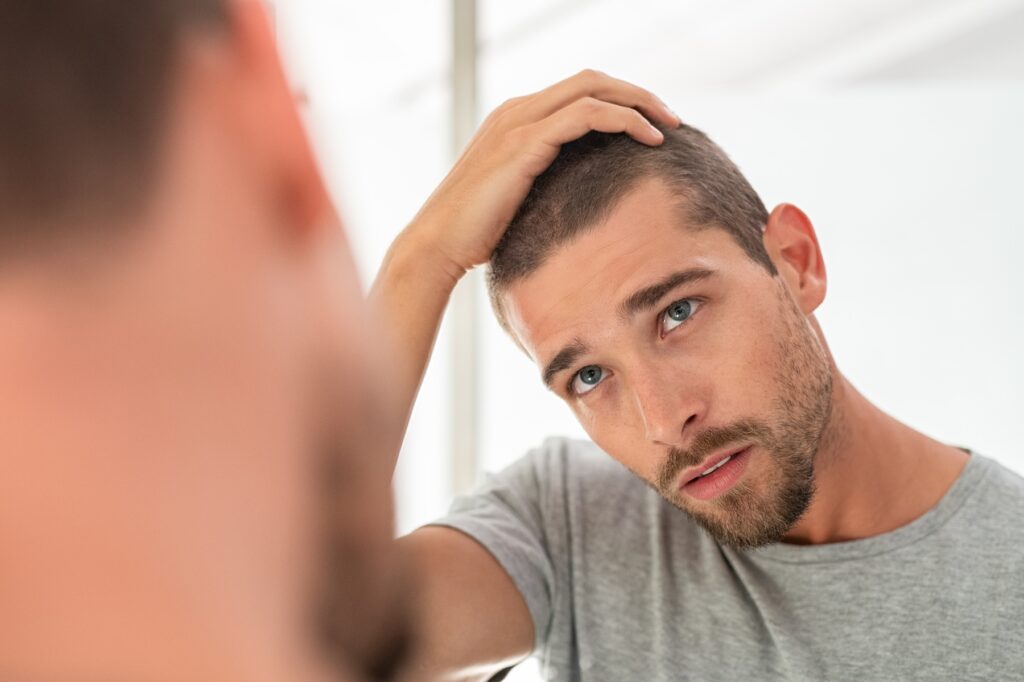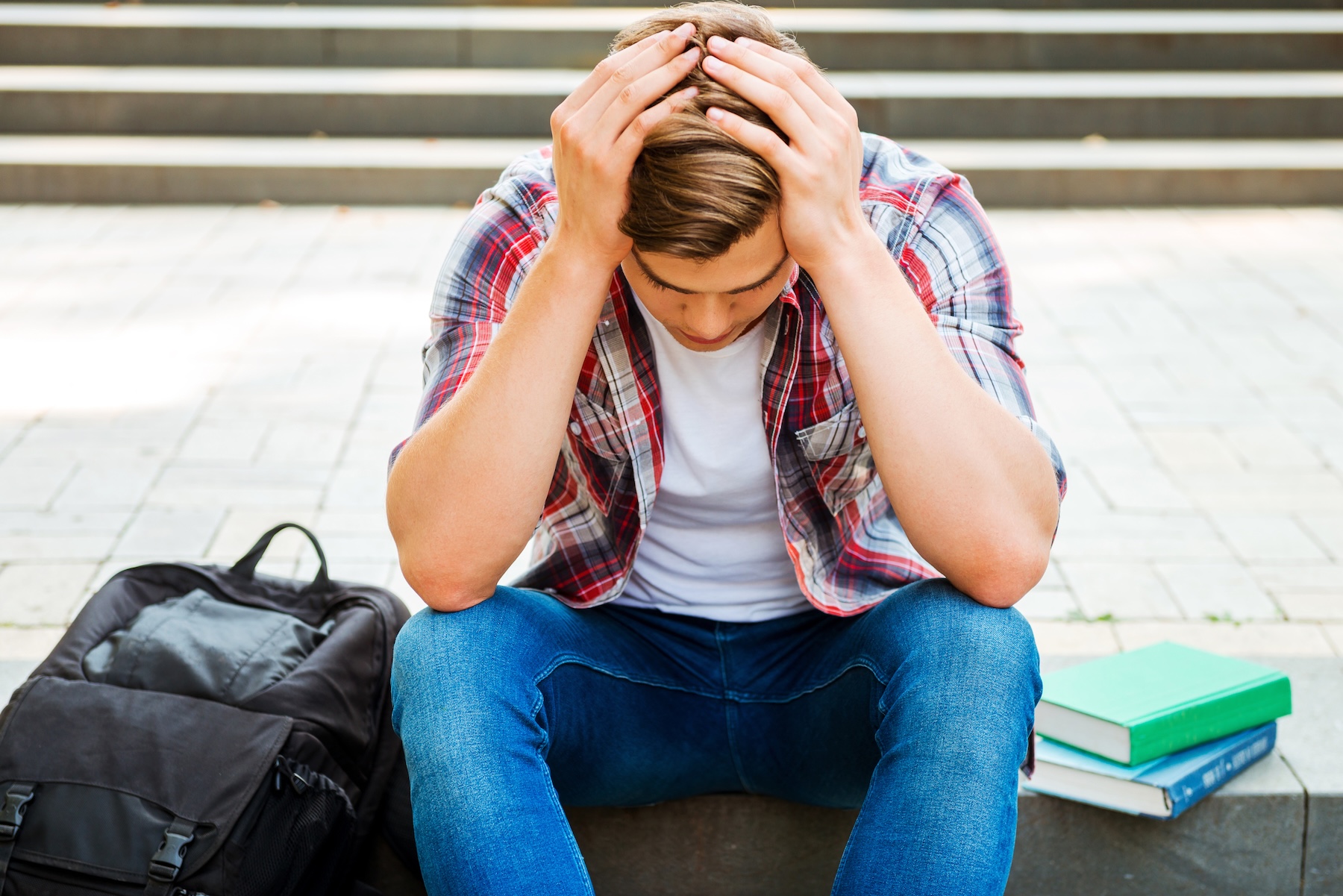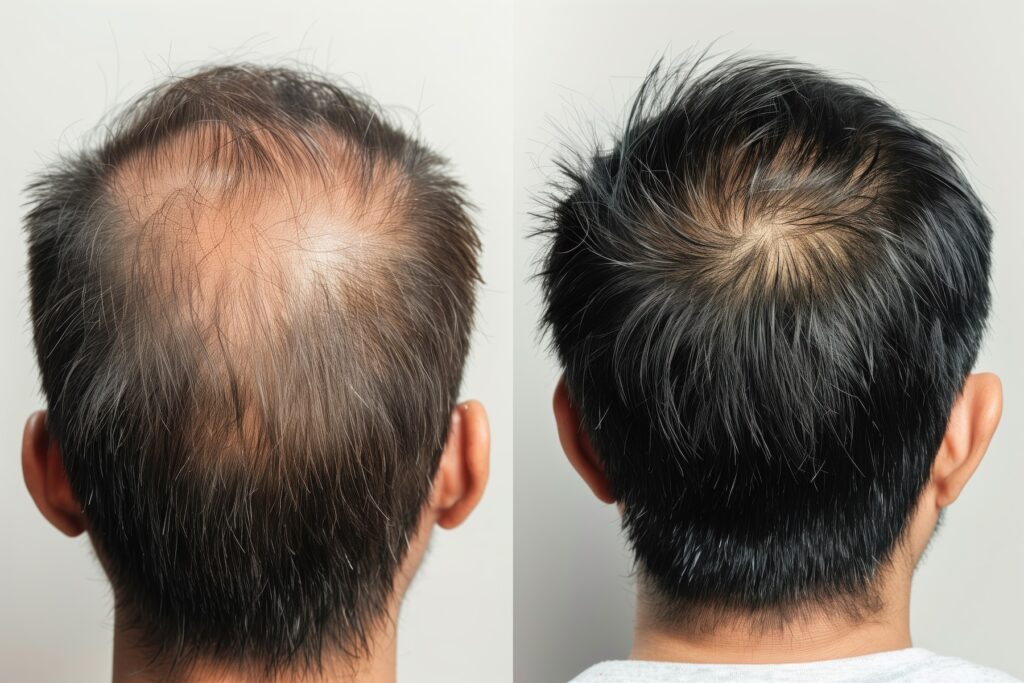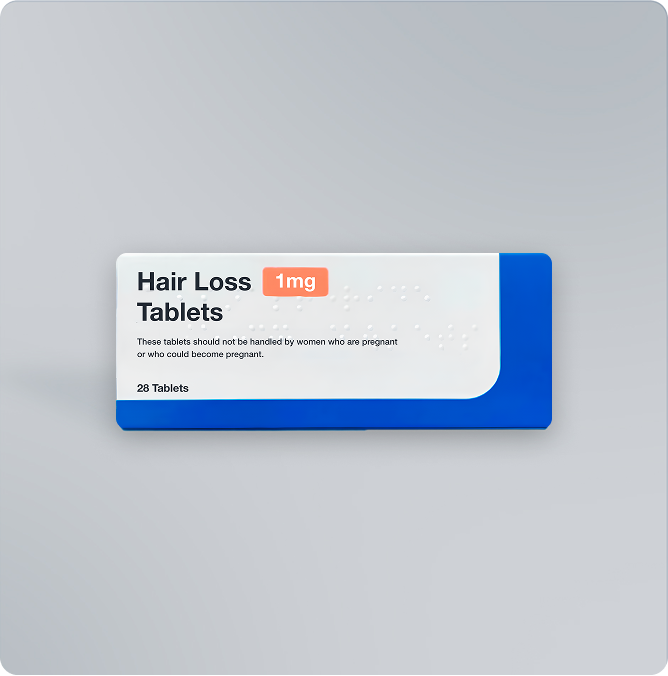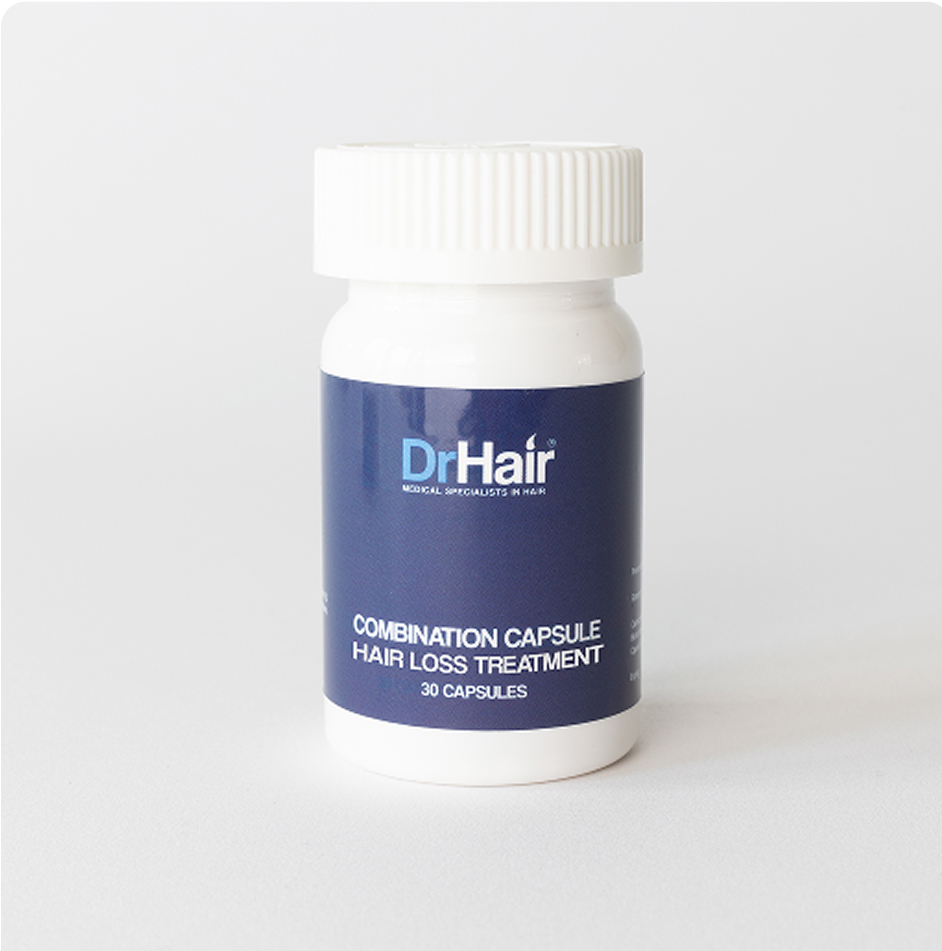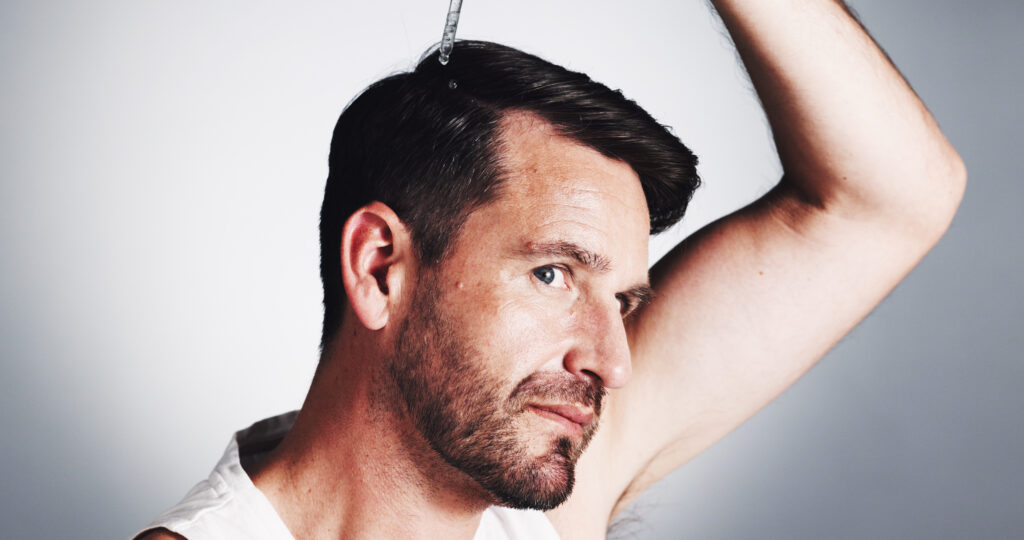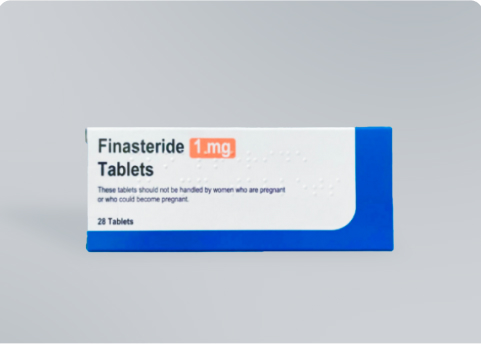Most men are affected by male pattern baldness at some point in their life. But studies have shown that age is significantly linked with hair loss, with most men losing increasing amounts of hair as they get older [1]. One study found a sharp rise in male balding after the age of 70, with cases of severe hair loss almost doubling from just over 20% to 40%:
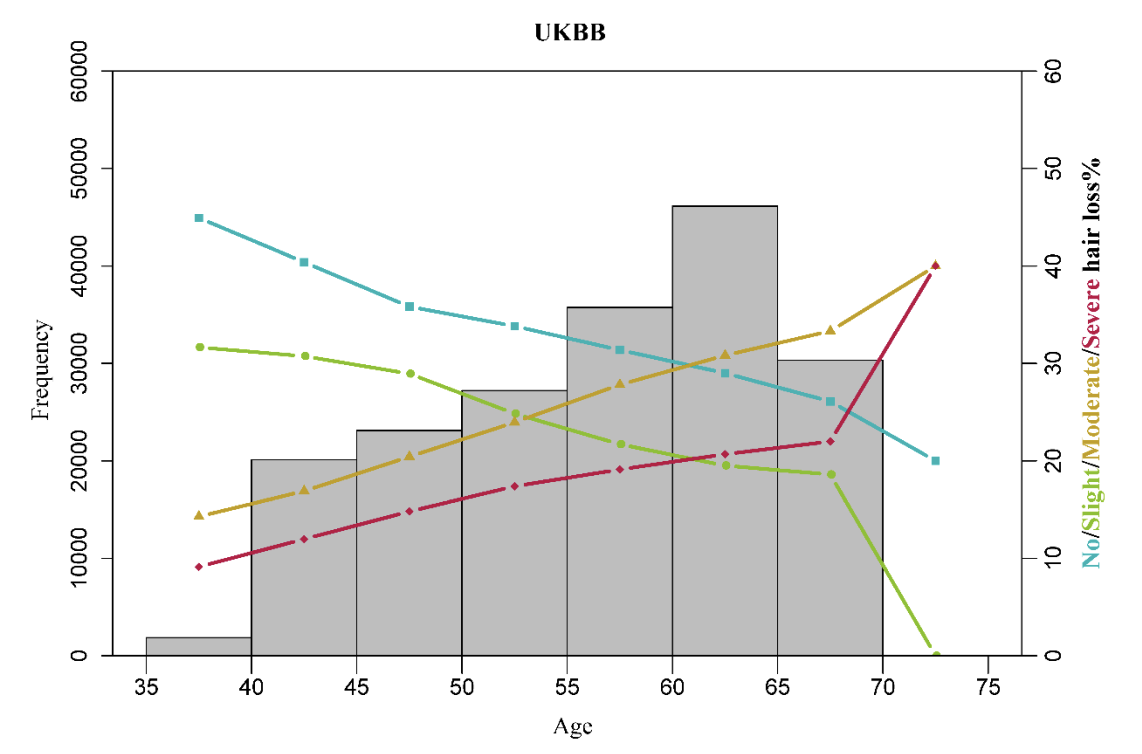
Age distribution and the percentage of each baldness
category in each age group among 186,444 men. Source & image credit: [1]. Image used under Creative Commons International License.
This chart shows there’s no specific age at which men start balding. It depends on many individual factors, including your genes, lifestyle, general health, and hormone levels.
That said, we can draw some conclusions about when most men start to go bald based on the available data. Let’s take a look at what age most men start to lose their hair, and whether you’re likely to start going bald any time soon.
Table of Contents
What age do men start balding?
Several research papers have investigated the prevalence of hair loss at certain ages. A large-scale study of more than 186,000 men in the UK found that more than half of men had started balding by the age of 40 [1-2]. By the age of 75, this had risen to 80%.
According to the National Institute for Health and Care Excellence (NICE), here’s when the first signs of male pattern baldness appear for white men within specific age groups [3]:
| Age | Prevalence of male pattern baldness |
| 18-30 | 30% |
| 31-50 | 50% |
| 51-70 | 80% |
A Korean study found lower rates of male pattern baldness among Korean men compared with Caucasian men. By the age of 30, 2.3% of Korean men had symptoms of hair loss, rising to 4% by 40 [4]. This suggests that even among populations where pattern baldness is less common, some men start losing their hair at a very young age. It’s possible to start going bald in your 20s or even earlier.
Can you start balding as a teenager?
Yes, it’s possible to start going bald when you’re a teenager. As you enter adolescence, your testosterone levels rise significantly. This triggers more testosterone to be converted to dihydrotestosterone, or DHT. DHT is a sex hormone that interacts with receptors in your hair follicles, causing them to shrink. Over time, this stops them from producing hair.
Unfortunately, for some men, this process happens very quickly. That means you could end up losing hair in your late teens. Approximately 15% of teenage boys have early-onset male pattern baldness [5].
Can you start balding in your 20s?
Yes. According to NICE, most men who are predisposed to inherited male pattern baldness start losing their hair between the ages of 20 and 25 [3].
Can you start balding after 25?
Yes. While most men start to see signs of hair loss in their 20s, it’s still possible for thinning to start later than this. Some men don’t start balding until they’re in their 30s, 40s, or even later.
Factors affecting the onset of male pattern baldness

As well as age, there are several other factors that can impact when you start to go bald, and how quickly your hair loss progresses. These include:
- Genetics — Male pattern baldness is normally inherited, though dozens of different genes can affect when your hair loss starts and how quickly it progresses.
- Hormones — If you have high DHT levels or a high sensitivity to DHT, you may be more vulnerable to rapid hair loss.
- Ethnicity — Race and nationality may play a part in the development of male pattern baldness. White men are most likely to go bald, followed by those of Asian descent [6]. Black men are less likely to lose hair than white or Asian men.
- Lifestyle — Lifestyle factors including diet and smoker status may influence how quickly hair loss develops. Certain nutritional deficiencies and regular smoking have been linked with male pattern baldness [7-8].

Recommended
Finasteride (1mg) + Minoxidil 5% (60ml)
Inhibit DHT production to halt hair loss and promote hair growth.
Symptoms of balding in men
The typical first symptom of male pattern baldness is a receding hairline. This is characterised by thinning at the temples and/or along the front of your hair.
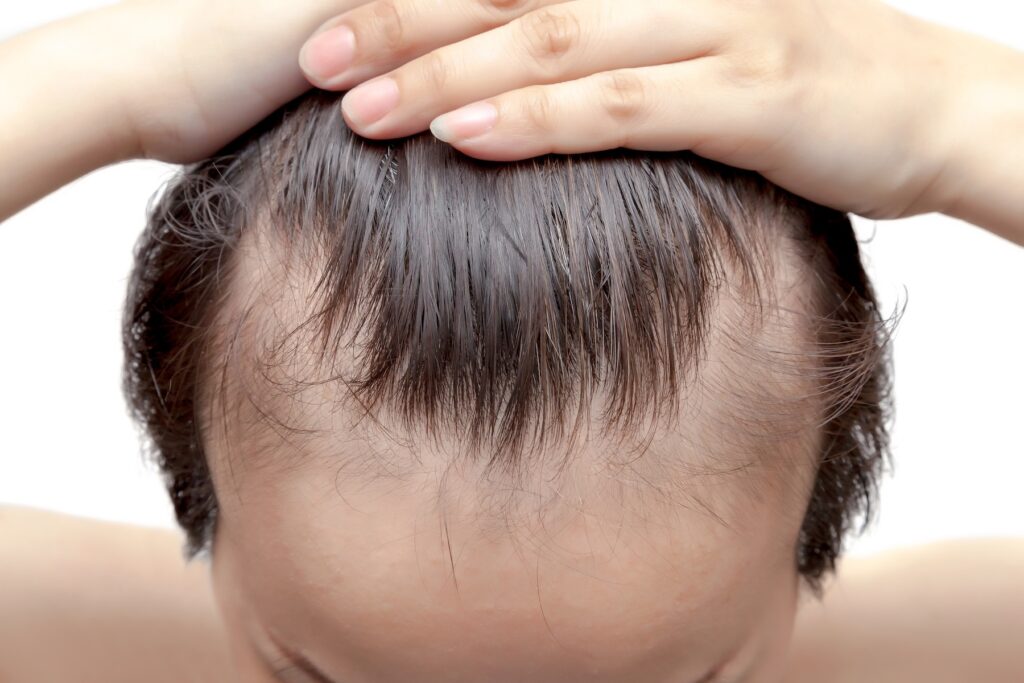
Male pattern baldness is progressive, so without treatment, your hair loss is likely to continue. You may eventually see a bald patch developing on your crown, and/or sparser hair growth on the top of your head.
The Norwood Scale shows the progressive stages of male pattern baldness:
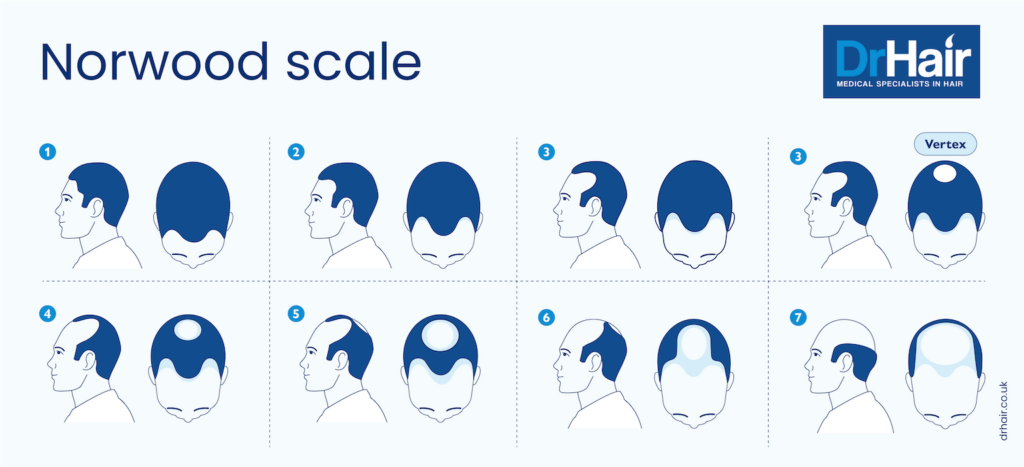
What causes male pattern baldness?
Male pattern baldness is generally caused by a combination of genes and hormones, though other factors (such as age, lifestyle, ethnicity) can also contribute.
DHT binds to receptors in your hair follicles, leading to follicle miniaturisation. This stops them from producing hair. Your genes determine your DHT levels and how sensitive you are to DHT.
Only certain follicles are vulnerable to DHT, which is why the hair at the back and sides of your head tends to remain intact even if you have extensive balding.
Preventing male pattern baldness with DrHair
Some treatments can help delay or even stop the progression of male pattern baldness: finasteride and minoxidil. You can even combine these treatments for best results.
Finasteride reduces the amount of testosterone that’s converted to DHT, lowering your systemic DHT levels. This decreases the amount of DHT that can impact your hair follicles, leading to improved hair loss symptoms and even visible regrowth. It’s especially effective for crown hair loss, though it can also help regrow a receding hairline.
Minoxidil works by improving blood flow to the follicles. Spraying 1 ml of 5% minoxidil to your thinning areas twice a day can slow hair loss and stimulate regrowth, especially when used in the early stages of male pattern baldness.
DrHair offers both these licensed treatments with fast assessment, discreet delivery, and the best prices. See our full range of hair loss products to find the right treatment for you.
FAQs
Learn more about signs and symptoms of male pattern baldness in these FAQs.
Most men notice they’re losing more hair in the shower before they see thinning or bald patches on their scalp. But this can quickly translate to a visibly receding hairline (or, less commonly, hair loss on the crown or mid-scalp).
Baby hairs are short hairs that grow along the frontal hairline. Some people naturally have lots of baby hairs, while for others they’re simply an early sign of hair regrowth.
In most cases, baby hairs aren’t a sign of balding. They’re more likely to suggest your hair is growing rather than thinning.
Unfortunately there’s no cure for genetic hair loss. However, there are some very effective treatments that can substantially reduce thinning and even stimulate regrowth if used consistently.
Eating a balanced diet and living a healthy lifestyle are sure to give your hair the best possible chances of growth. But this alone is unlikely to prevent or slow male pattern baldness if you’re genetically predisposed. The only way to stop or delay balding is to use a proven treatment like minoxidil or finasteride.


